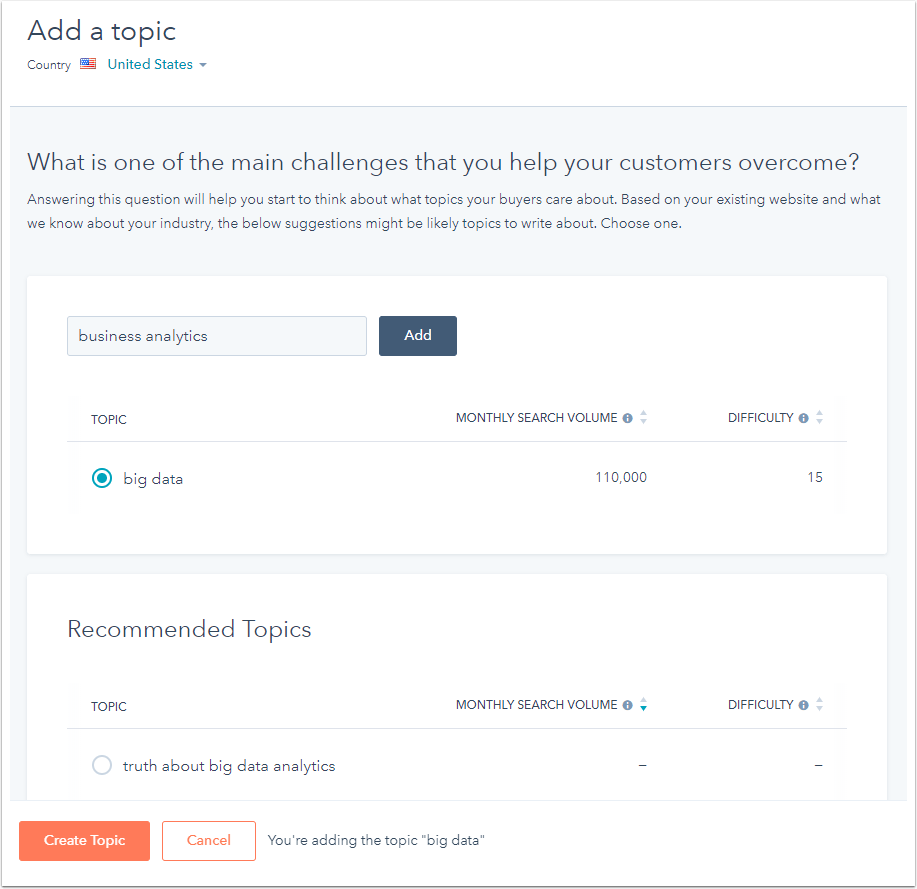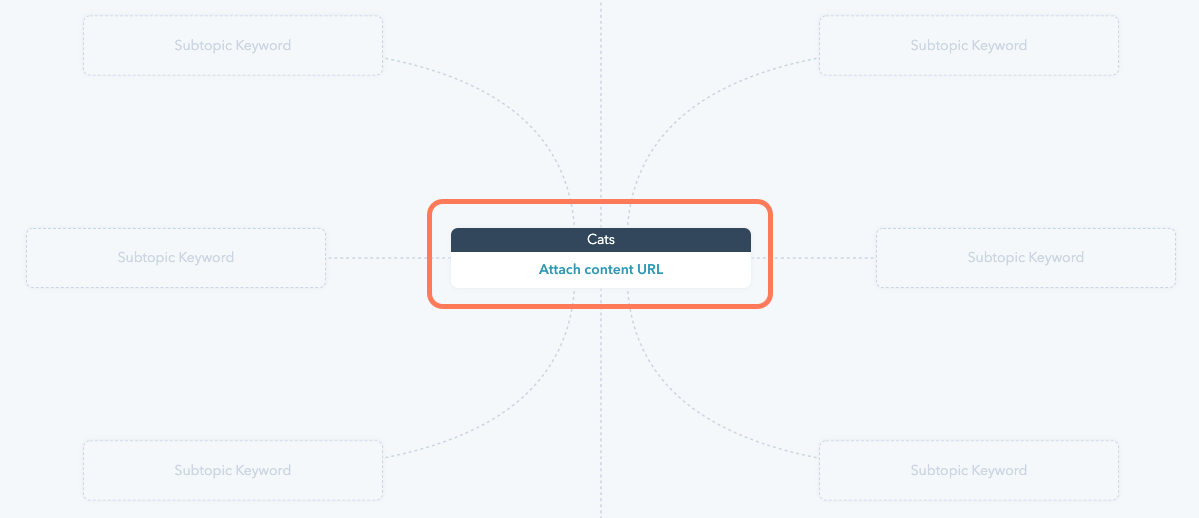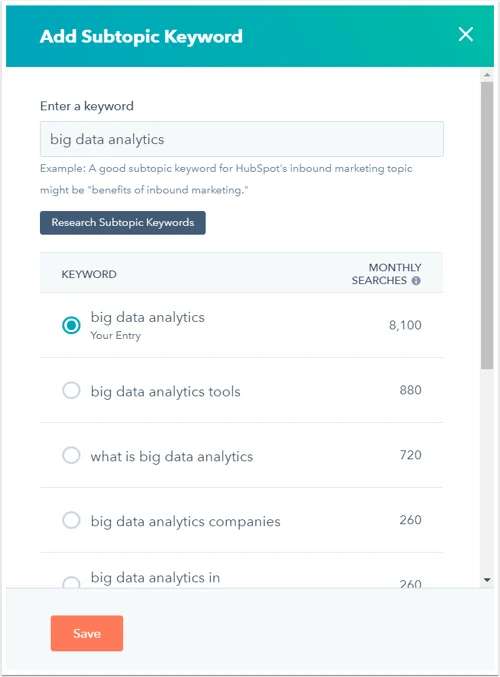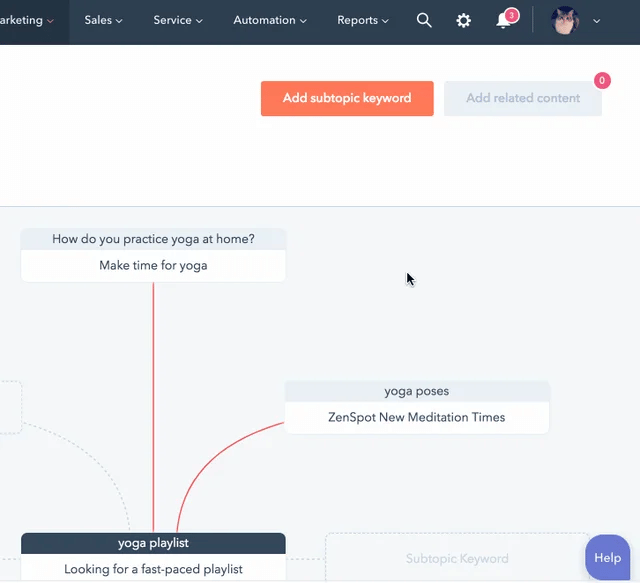How to Create Topics for Your SEO Strategy in Hubspot
Learn the step-by-step process of shaping your SEO strategy through effective topic creation in HubSpot. Uncover the tactics that can elevate your website's search engine visibility and user engagement.

Utilizing HubSpot's SEO tools enables you to explore and arrange subjects along with corresponding subtopic keywords, aligning with your company's areas of proficiency. These chosen subjects then establish the bedrock for all the content produced on your blog and website. Crafting content structured by these topics and subtopics enhances search engines' comprehension of your website's purpose. Ultimately, this approach enhances the performance of your content in search results over time.
What are the Benefits of Creating Content Based on Topics?
Crafting content centred around well-defined topics and subtopics provides more precise indexing of your website by search engines, such as Google. These search engines meticulously assess keyword phrases within your content, titles, meta descriptions, hyperlinks, and other elements. You can gain a deeper understanding of how SEO functions and the available SEO tools within your HubSpot account.
To establish the framework of your online content, pinpoint a handful of primary topics that encapsulate your company's areas of expertise. For the structural arrangement of your content, each topic will encompass the following components:
- A central pillar page on your website dedicated to the main topic.
- Links on the pillar page that connect to other pages or blog posts focusing on specific subtopic keywords. It's essential that the content for subtopic keywords also includes a hyperlink leading back to your pillar page.
- These internal links connecting your pages contribute to search engines' comprehension of your website's purpose and the significance of each distinct page.
Both your topic's pillar page and subtopic content have the flexibility to be pages or blog posts hosted on HubSpot, or URLs pointing to pages hosted externally.
Add your First Topic
When you're prepared to embark on crafting your initial topic, you can commence the process within the SEO tool. To gain a deeper understanding of selecting a pertinent topic, delve into additional information on this subject.
- Navigate to Marketing > Website > SEO.
- Click on the Topics tab.

- Click on "Research Topics."
- In the Enter a topic box, type a topic.
- In the bottom right, click Done.
Create a New Topic
For topics subsequent to your initial creation, you'll have the capability to assess the popularity of the topic phrase and its expected difficulty in achieving a rank in Google search results. This assessment occurs before finalizing the topic creation process.
Accessing HubSpot Account: To initiate this process, follow these steps within your HubSpot account:
- Navigate to Marketing > Website > SEO.
- Navigating to Topics: Continue by selecting the "Topics" tab.
- Initiating a New Topic: Progress by taking the following steps:
- Click on "Add a topic" located in the upper right corner.
Topic Entry and Analysis: Provide your chosen topic in the text field. Subsequently, click "Add" to initiate an analysis of SEO metrics for the specified topic.
Reviewing Metrics: Evaluate the topic's Monthly Search Volume and Difficulty validation metrics. These metrics can be compared with the metrics for Recommended Topics.
Custom Location Data: To access topic validation data for a different location, utilize the Country dropdown menu in the upper left corner. Select your preferred location from the available options.
Selecting Your Topic: Upon thorough data research, choose the radio button next to the topic you intend to write about.
Finalizing Topic Creation: Complete the process by clicking "Create Topic," located in the bottom left corner.

Attach Topic Content
-
Open your HubSpot account.
-
Go to Marketing > Website > SEO.
-
Click on the Topics tab.
-
Select the name of your topic.
-
Click Attach content URL in the centre of the topic.

- Attach your pillar page content in the right panel.
To attach an existing HubSpot content:
- Use the Pillar Page search bar for name or URL lookup.
- Click on the content from search results to attach it.
For linking an external resource:
- Click Add external URL.
- Enter the external page's URL and save. The SEO tool will validate the link in about 20 seconds.
To create new content for your pillar page:
- Click Create a post.
- Choose the content type: blog post, landing page, or website page from the Content type dropdown.
- Enter the title for your new content, then click Create to attach the draft.
To attach existing content related to your topic:
- Click on suggested content in the Suggested Content section.
- Select your pillar page, and then click Save.
Include Subtopic Keywords and Supporting Content:
Once you've connected a pillar page to your topic, add supporting content related to subtopic keywords. Make sure the subtopic content includes a link back to the main pillar page. This helps establish your website's authority for both the topic and subtopic keywords in search engine results.
To Add Supporting Content:
- Click on the Add subtopic keyword in the upper right corner.
- On the right panel, input a subtopic keyword and click Research Subtopic Keyword.
- You'll find metrics displaying the average monthly searches for the subtopic keyword, along with a list of related subtopic keywords.
- Choose your desired subtopic keyword and click Save.

Moving forward, you'll receive a prompt to associate content with this specific subtopic keyword.
Follow these steps in the right panel to link your supportive content:
To attach an existing HubSpot blog post, landing page or website page:
- Use the Subtopic content search bar to find content by name or URL.
- Click on the content from the search results to attach it.
If you want to link to an external source:
- Click on Add external URL.
- Enter the URL of the external page or blog post, then click Save. The SEO tool will verify the link within about 20 seconds.
For crafting a new page or blog post tailored to this subtopic keyword:
- Click Create a post.
- Select the Content type from the dropdown: blog post, landing page, or website page.
- Provide a title for your new content, and then click Create to attach your fresh draft.
To connect existing content containing phrases related to this subtopic keyword:
- Check out the Suggested Content section and click on a relevant piece of content.
To add a new subtopic keyword in the Content Performance tab:
- Click the Content Performance tab.
- In the upper right, click Add subtopic keyword.
Edit subtopic keyword content
- Click on a subtopic keyword within the SEO tool.
- In the upper right of your Subtopic content, click Remove Attached Content.
- Choose a new piece of content to attach.
- Close by clicking the X in the upper right.
Deleting a Subtopic Keyword:
- Click on a subtopic keyword to open the Manage Subtopic panel.
- In the lower right, click Delete.



%201-1.webp?width=148&height=74&name=our%20work%20(2)%201-1.webp)


.png?width=344&height=101&name=Mask%20group%20(5).png)






.png?width=352&name=image%20(2).png)









